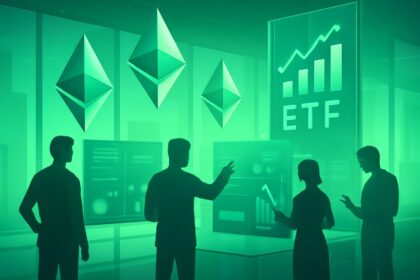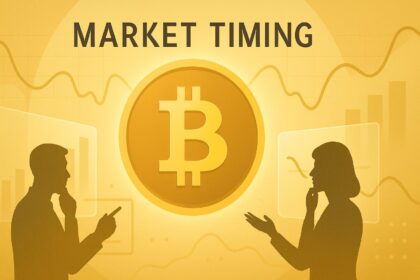Blockchain Growth in 2025 Driven by Real Usage and Innovation
The blockchain sector is experiencing rapid expansion in 2025, propelled not by speculative hype but by genuine user engagement and technological advancements. Both foundational layer-1 (L1) and layer-2 (L2) solutions are competing to capture millions of users by offering low-cost transactions, seamless integration with mainstream platforms, and vibrant decentralized finance (DeFi) and non-fungible token (NFT) ecosystems.
Ranking Methodology: Active Users as the Key Metric
This analysis ranks the fastest-growing blockchains based on monthly active users—measured as unique wallet addresses executing transactions. The ranking differentiates between L1 blockchains, which provide core infrastructure with native consensus, and L2 solutions that enhance scalability and reduce costs on top of L1s. Metrics such as fully diluted valuation (FDV) and recent token trading volumes provide additional context on each network’s market potential and activity.
Top 10 Fastest-Growing Blockchains of 2025
- Solana (L1)
- Monthly active users: 57 million
- FDV: $107.2 million
- 30-day token trading volume: $284.2 billion
- Growth drivers: DeFi and NFT ecosystems, high-frequency memecoin trading, Firedancer validator client enhancing network reliability, increasing institutional adoption.
- Challenges: Network outages affecting reliability, concerns over centralization, competition from L2 solutions.
- Near Protocol (L1)
- Monthly active users: 51.2 million
- FDV: $3.1 million
- 30-day token trading volume: $7.8 million
- Growth drivers: AI-native features for decentralized applications, low transaction fees with carbon neutrality, strategic partnerships like EigenLayer, ecosystem growth in DeFi and gaming.
- Challenges: Competition from faster L1s and L2s, token price volatility, complexities related to sharding.
- BNB Chain (L1)
- Monthly active users: 46.4 million
- FDV: $121.2 billion
- 30-day token trading volume: $56.1 billion
- Growth drivers: Reduced block time to 0.75 seconds, AI integration for data ownership.
- Challenges: Centralization concerns due to Binance’s influence, regulatory scrutiny.
- Base (Ethereum L2)
- Monthly active users: 21.5 million
- FDV: $2.92 billion
- Growth drivers: Ultra-low fees averaging $0.01, access to Coinbase’s 100+ million users, stablecoin transaction flows, partnerships for consumer DApps.
- Challenges: Network congestion from high activity, reliance on Ethereum’s security, regulatory compliance as a newer ecosystem.
- Tron (L1)
- Monthly active users: 14.4 million
- FDV: $33.5 billion
- 30-day token trading volume: $51.7 billion
- Growth drivers: Minimal transaction fees, AI and cross-chain integrations, partnerships such as with Rumble Cloud.
- Challenges: Regulatory scrutiny and centralization risks.
- Bitcoin (L1)
- Monthly active users: 10.8 million
- FDV: $2.3 trillion
- 30-day token trading volume: $1.3 trillion
- Growth drivers: Institutional inflows through ETFs (notably $27.4 billion held by professional investors as of Q4 2024), supply reduction from halving events, adoption as a strategic reserve asset.
- Challenges: High energy consumption and price volatility linked to macroeconomic factors.
- Aptos (L1)
- Monthly active users: 10 million
- FDV: $5.3 billion
- 30-day token trading volume: $13 billion
- Growth drivers: High throughput with peak 19,200 TPS, Move programming language for secure smart contracts, partnerships like Tether’s USDT launch.
- Challenges: Need for broader adoption and competition with established L1 blockchains.
- Ethereum (L1)
- Monthly active users: 9.6 million
- FDV: $522.7 billion
- 30-day token trading volume: $1.1 trillion
- Growth drivers: Pectra upgrade improving user experience and scalability, ETF inflows, institutional staking.
- Challenges: Scalability constraints, higher fees compared to competitors, regulatory pressures.
- Polygon (L2)
- Monthly active users: 7.2 million
- FDV: $2.6 billion
- 30-day token trading volume: $4.2 billion
- Growth drivers: Heimdall v2 upgrade enhancing interoperability, partnerships with Fortune 500 companies.
- Challenges: Regulatory scrutiny under MiCA, competition from other L2 solutions.
- Arbitrum One (Ethereum L2)
- Monthly active users: 4 million
- FDV: $5.1 billion
- 30-day token trading volume: $14.3 billion
- Growth drivers: Integration with platforms like Robinhood for tokenized assets, Stylus upgrade reducing fees.
- Challenges: Dependence on Ethereum mainnet, regulatory uncertainty, competition from Optimism.
Key Trends Shaping Blockchain Expansion
- Stablecoin adoption: Stablecoins such as USDT and USDC are significantly increasing transaction volumes, enhancing liquidity and user engagement.
- Layer-2 scalability: Solutions like Arbitrum One and Base are expanding Ethereum’s capacity and reducing transaction costs, making decentralized applications more accessible.
- DeFi and NFT ecosystems: These sectors continue to attract millions of new users, with platforms like GMX on Arbitrum and Polygon’s NFT volume reaching $227 million in Q1 2025.
- Mainstream platform integration: Networks benefit from partnerships with major platforms, exemplified by Base’s integration with Coinbase’s extensive user base.
- Institutional participation: Bitcoin ETFs amassed $36.4 billion in 2024, while corporate partnerships, such as Starbucks collaborating with Microsoft and Azure blockchain, bolster legitimacy.
Challenges and Outlook
Despite impressive user growth, blockchain networks face challenges including inflated user metrics caused by bots, trade-offs between scalability and decentralization, regulatory uncertainties especially around stablecoins, and fierce competition among L1 and L2 solutions.
To sustain momentum, blockchains are enhancing bot detection, advancing scaling technologies, prioritizing regulatory compliance, and exploring innovative features such as AI and asset tokenization. These initiatives will be critical in defining the ecosystem’s trajectory.
Disclaimer: This article does not constitute investment advice. All investments carry risk, and readers should conduct their own research.
FinOracleAI — Market View
The robust growth in active users across leading blockchains signals strong market adoption driven by real-world use cases like DeFi, NFTs, and stablecoin transactions. However, persistent challenges such as regulatory scrutiny and scalability trade-offs introduce risks that could impact future growth trajectories. Investors should monitor regulatory developments and technological upgrades, particularly in L2 solutions, which are crucial for maintaining user engagement and network utility.
Impact: positive













